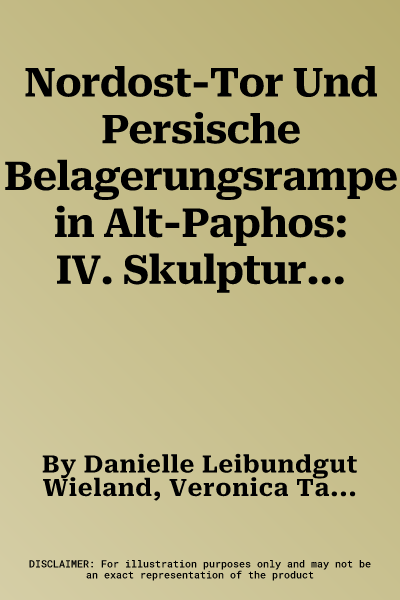English summary: For the history and archaeology of the city of
Palaipaphos (Old Paphos) on Cyprus, seat of the kings of Paphos and
famous for its large sanctuary of Aphrodite, the Persian siege ramp at
the Northeast Gate on the Marcello plateau is of immense interest. Here,
in a dominant position above the city, the monumental gate and a section
of the defensive walls, with a tower and a dry ditch, form a key point
in the ancient defences of the city. Fire debris, weapon finds and a
mighty siege ramp bear witness to a war which took place shortly after
500 BC. In the heaped-up rubble of the ramp, fragments came to light of
a sanctuary which had been deliberately destroyed to build the ramp and
which must have stood outside the city. The original location and ground
plan of the sanctuary can no longer be traced, but it has been possible
to determine the nature of its architecture and some of the interior
furnishings. This unusual assemblage, for which a terminus ante quem is
provided by the siege, includes some of the finest Archaic sculptures
found on Cyprus, along with votive stelai, small altars, blocks bearing
inscriptions, stone implements, and architectural elements, including
large palm capitals, moulded cornices and blind windows with
balustrades. It is thought that the sanctuary was dedicated to a
powerful tutelary god and to Aphrodite, goddess of Paphos. Its
situation, close to the monumental Northeast Gate, its sculptural
ornamentation, and the choice of pictorial motifs for the votive
offerings not only indicate the high status of this cult site but show
that it was closely connected with the king of Paphos and the city's
elite. Notable amongst the statuary are male figures wearing royal
insignia and robes which were probably reserved for religious
ceremonies. These include a particularly striking bearded head which is
interpreted as a ceremonial portrait of one of the priest-kings of
Paphos. His crown and hair style combine elements of Egyptian and
Assyrian/Persian symbols of rulership. German description: Fur die
Geschichte und Archaologie der Stadt Alt-Paphos auf Cypern, Sitz der
paphischen Konige und beruhmt fur das grosse Aphrodite-Heiligtum, ist
die persische Belagerungsrampe beim Nordost-Tor auf dem
Marchellos-Plateau von hochstem Interesse. Hier, in dominanter Position
uber der Stadt, bilden das monumentale Tor, ein Teil der Wehrmauern mit
Turm und ein Trockengraben einen Schlusselpunkt der antiken
Stadtbefestigung. Brandreste, Waffenfunde und eine machtige
Belagerungsrampe zeugen von einem Krieg, der kurz nach 500 v. Chr.
stattgefunden hat. In der Rampenaufschuttung kamen Trummer eines zum Bau
der Rampe mutwillig abgebrochenen Heiligtums zutage, das ausserhalb der
Stadt gestanden haben muss. Ursprungliche Lage und Grundriss der
Kultstatte lassen sich nicht mehr bestimmen, doch ist es gelungen, den
baulichen Charakter und Teile der Innenausstattung zu erfassen. Zum
ungewohnlichen Fundkomplex, dessen spatestmogliches Datum durch die
Belagerung gegeben ist, gehoren einige der qualitatvollsten auf Cypern
gefundenen archaischen Skulpturen, ausserdem Votivstelen, kleine Altare,
Inschriftblocke, Steingerate und Bauteile, darunter grosse
Palmkapitelle, profilierte Gesimse und Scheinfenster mit Balustrade. Der
Standort des vermutlich einem machtigen Schutzgott und der paphischen
Aphrodite geweihten Heiligtums in der Nahe des monumentalen
Nordost-Tores, seine Bauornamentik und die Wahl der Bildmotive fur die
Weihgaben machen deutlich, dass die Kultstatte einen hohen Rang und
zudem eine enge Verbindung zum paphischen Konig und der Elite hatte.
Bemerkenswert sind mannliche Statuen mit koniglichen Insignien und
Gewandern, die wahrscheinlich nur im Kult getragen wurden, darunter
besonders herausragend ein bartiger Kopf, der als zeremonielles Portrat
eines Priesterkonigs von Paphos gedeutet wird. Seine Krone und
Haartracht vereinen Elemente agyptischer und assyrisch-persischer
Herrschaftssymbolik.

